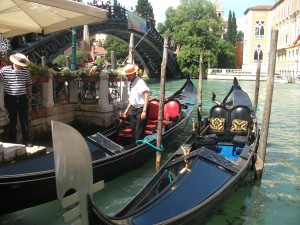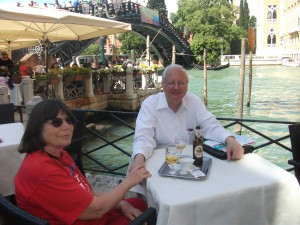Yesterday we celebrated Independence Day. In Egypt, protesters celebrated the removal from office of an elected president by the military. On the 237th anniversary of the signing of the Declaration of Independence, it is worthwhile to reflect on all the ramifications of that event over the last two and one-third centuries. Those ramifications are not always as obvious as most Americans, including political commentators, may think. The wheels of history often turn slowly, and sometimes they seem to switch directions with lightning speed, but there is an underlying logic that bends that arc toward freedom, born of desires that run deep in the human psyche.
This essay is decidedly not a book review, though it is the product of decades of reading and thinking and, at times, direct involvement in protest and politics and community affairs, plus whatever knowledge was instilled in me by degrees in political science, journalism, and urban planning. Readers can find a plethora of writings on the topics of political movements and protests and revolutions, ranging from Jean-Jacques Rousseau and Thomas Paine in the 18th century to Samuel Huntington and Fareed Zakaria more recently. For my own benefit, I recently completed a 16-year quest to read, sequentially, biographies of all the U.S. presidents, Washington through Obama. The exercise taught me respect for the forces that launch men (and, hopefully, women) into high office and either keep them there or cause their removal. National leaders only seem to be in control of events. They can bend the needle of history, and often do, but ultimately they are also the lucky few in the right place at the right time.
That brings me first to the subject of just who led the American Revolution. These men clearly pledged their “Lives, our Fortunes, and our sacred Honor” to the cause of independence, a noble sentiment in view of what many were in a position to lose. These were not the paupers of American society. Paupers undoubtedly served in the revolutionary army, but they did not lead it. These were men of the middle and upper classes, educated men who understood the revolutionary ramifications of their aims. Americans, at the time of the revolution, were already relatively prosperous by global standards of the times, raising the question of what they had to complain about. They had had some taste of liberty in governing their own local affairs, but they wanted more. That word more is critical to the theme of this essay. To spur protest and revolution, two ingredients are essential: first, some sense of what is possible in life; and second, some sense that gaining more of it is possible despite some present political obstacles. The reason that protests do not occur more often in the very poorest of societies is that the element of hope is typically missing, replaced by acceptance or resignation. One can change a society’s expectations, of course; Mohandas Gandhi was a genius at doing exactly that. But the expectations are vital in creating the urgency for protest in the first place.
Repeatedly, we have seen emerging societies with growing economies and a mushrooming middle class explode in protest. It is a theme common to both the American Revolution and the civil rights movement in the 1960s, and many other movements in between.
What is particularly interesting today is that the new element is the speed of communication among protesters, facilitated by social media like Twitter and Facebook. It has been a common element in recent protests from Turkey to Egypt to Tunisia to Brazil and even to China. It is fair to say that the Chinese leaders’ biggest nightmare is a social media-driven protest that spins out of their control. In the midst of this phenomenon, it is worth noting that, while one need not be wealthy to have access to such tools, it certainly does not help to be desperately poor. The use of social media depends on education and a modicum of wealth every bit as much as the dissemination of revolutionary tracts did in George Washington’s day.
There are variations and exceptions. It is worth noting here that the very first successful anti-colonial rebellion in North America, in 1680, occurred when the Pueblo Indians rose up against the Spanish in what is now New Mexico. The social media of their day were well suited to their environment. Long-distance runners, common to the Pueblo culture, disseminated the news of the planned uprising, with its identical timing in all pueblos, by counting the number of days it took for each runner to reach his destination, so that all could strike at the same time, thus catching the Spaniards off guard. It worked, and the Spanish did not return again until 1692, somewhat chastened by the experience (but probably not nearly penitent enough). People work with the tools available.
So let’s return to the policy dilemma facing the West regarding events in Egypt. Here we have, under a president elected just a year ago, a sagging economy where the public was looking forward to improvements following the end of the Mubarak regime. President Mohammed Morsi, somewhat an accidental president, led an administration dominated by the Muslim Brotherhood, which emerged from decades of repression and imprisonment under authoritarian regimes and with little sympathy from the military. With this history, it is entirely natural that leaders of the Brotherhood felt their time had come, and that it was now their privilege to govern the country as they saw fit. The problem was that their priorities were at odds with those of vast segments of the Egyptian population, which was more interested in economic gains than in Islamist ideology. The protesters had tasted better, even briefly, just a year ago, and had both the education and social media with which to conceive of a path forward, however sketchy it may sometimes seem. Morsi’s leadership, instead of providing a democratic outlet for those frustrations, seemed instead to become a growing obstacle, and the fire was lit. The problem is that their vision of leadership was cramped. An Egyptian-American friend commented to me that Morsi was “intransigent,” and that “there is more to democracy than the ballot box.” Yet the Muslim Brotherhood seemed to view their election as a form of entitlement. Their entitlement, however, meant a form of disenfranchisement for their opponents. Democracy works that way to a certain extent, of course; the question is just how much, and the ability of leadership to compromise and to navigate through troubled waters. In a true democracy, electoral majorities are seldom permanent or long-lasting.
In contrast, consider the case of Nelson Mandela. He had every bit as much reason to view election as entitlement after years of imprisonment, but he used those years to craft a vision of a post-apartheid society that would be inclusive and forgiving. Like Washington, who set the two-term precedent for U.S. leaders, Mandela chose to step down after serving once. He had set the tone, and that was enough. Clearly, South Africa has a long way to go, and Mandela’s leadership only scratched the surface of the problems it sought to address, but he did not suffer from hubris. Quite the opposite. Likewise, Brazil’s President Dilma Rousseff, facing protests both unexpected and widespread, chose not to crack down but to respond with measures seeking to respond to the more reasonable grievances. Brazil has made enormous progress in the last 20 years; the protests demonstrate that Brazilians, given a taste of prosperity, have learned that they can push hard for even more—without the military repression of half a century ago. Given her commitment to improving public transit infrastructure, some of Rousseff’s promises may serve to improve Brazilian society anyway, much as the Voting Rights Act and other civil rights measures were an entirely sensible response to the American civil rights movement in the 1960s.
I am not saying any of this to comment directly on whether military involvement in Egypt’s struggle to achieve a functioning democracy is good or bad, a step forward or back. The relationship between the Egyptian public and the Egyptian military is fraught with features unique to Egyptian history, which is worth studying before one jumps to too many conclusions about what it all means. But I am saying that there is a relationship between our Independence Day and their protests, and there is a common cord in humanity that responds to the light at the end of the tunnel. It’s the fact that we can see through the tunnel to perceive that light in the first place that motivates us.
Jim Schwab

![999983_402895306485828_1765724132_n[1]](http://www.jimschwab.com/Hablarbooks/wp-content/uploads/2013/07/999983_402895306485828_1765724132_n1-300x225.jpg)

